Empowerment with Srinivasan Services Trust
We all know the proverb “Give a man a fish and you feed him for a day, teach a man to fish and you feed him for a lifetime”. But how many of us do this in our lives? Recently I was invited by SST , Srinivasan Services Trust, to visit Padavedu in Tamilnadu to observe their efforts which align perfectly with this proverb. SST was founded in 1996 and has a sound foundation encompassing sustainable initiatives touching key focus areas – infrastructure, women empowerment, social and cultural development, education, health and environment, resulting in equitable
distribution of wealth creation, reduced income gaps and human capacity building.
Padavedu is a beautiful scenic place that consists of 17 villages surrounded by Jawadu hills, forests, river, other water bodies and paddy, coconut & banana fields. So off I went, happy for the short break from Delhi’s winter and smog. The latter is what excites Delhites easily these days. The chance to breathe somewhere ELSE. Such are times. It was the kind of trip where one wonders if a village life is the kind of life we all should be living. What exactly are we doing in urban fast paced concrete plethora we call cities?
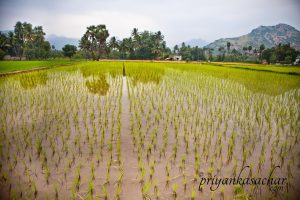
Padavedu
We flew down to Chennai from where we drove down to Vellore, the city nearest to Padavedu cluster of villages. Our trip was very well planned and we had buffer for delays, ample time to rest overnight and the chance to begin our village visit on a fresh day. Once there, we visited various areas where SST is making its mark. SST works with the national, state governments and various communities across 5015 villages in 5 states of India, affecting the lives of 3.2 million people. Padavedu is one of the locations.
first stop – Pottery in kesavapuram
We visited a family that sustains its livelihood completely through pottery . The business is good throughout the year and especially good around festivals like Diwali. As we reach the house, we spot a lady kneading the clay as if dough for a bread except of course it’s a whole lot. Then she sprinkled some dry dust on it, which almost reminded me of oregano being sprinkled on a loaf just before baking. Well, at the end of the day, both the things do fill our stomach one way or the other :). The potter wheel was being manned by Sekhar who expertly and seemingly effortlessly gave it a good whirl and generated 4-5 earthern vessels in that single spin itself. Sekhar and his family create a large variety of things like diyas (various shapes, sizes), cooking utensils, pots, pans, show pieces and even gas stoves! One can light a fire under the earthern stove and cook meals . It has 2 “burners” too! If you have ever watched a potter work, you know how mesmerising it is (not talking about the movie Ghost here) to watch. Of course the reality of the effort dawns on oneself when one comes in contact with the clay oneself. We were given a chance to try our hands at pottery. Needless to say the virgin potters made some strange artwork only they could appreciate. They were bottomless, shapeless and purposeless. But something one creates always looks lovely to that person, be it a child or well, useless pottery. 😉
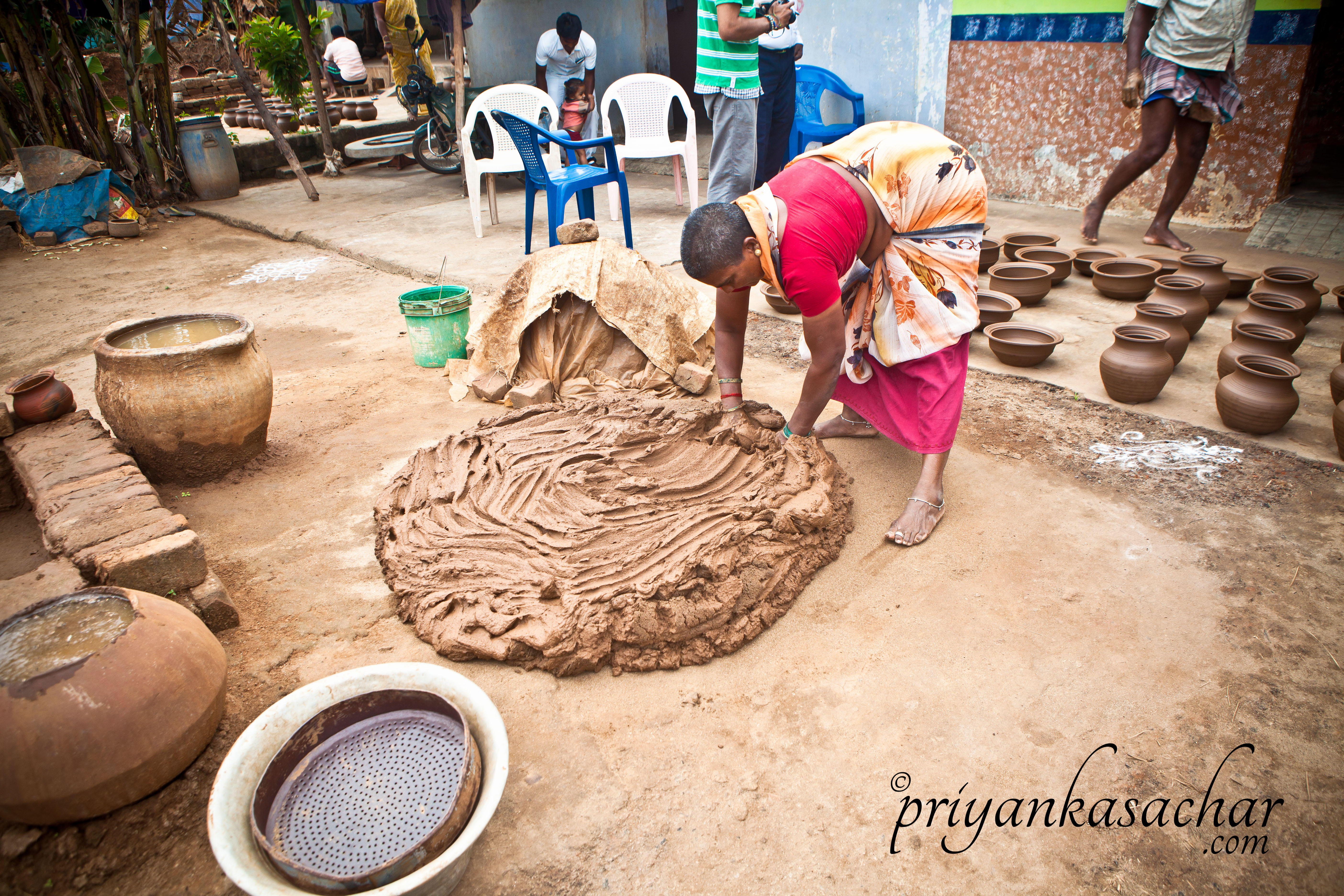
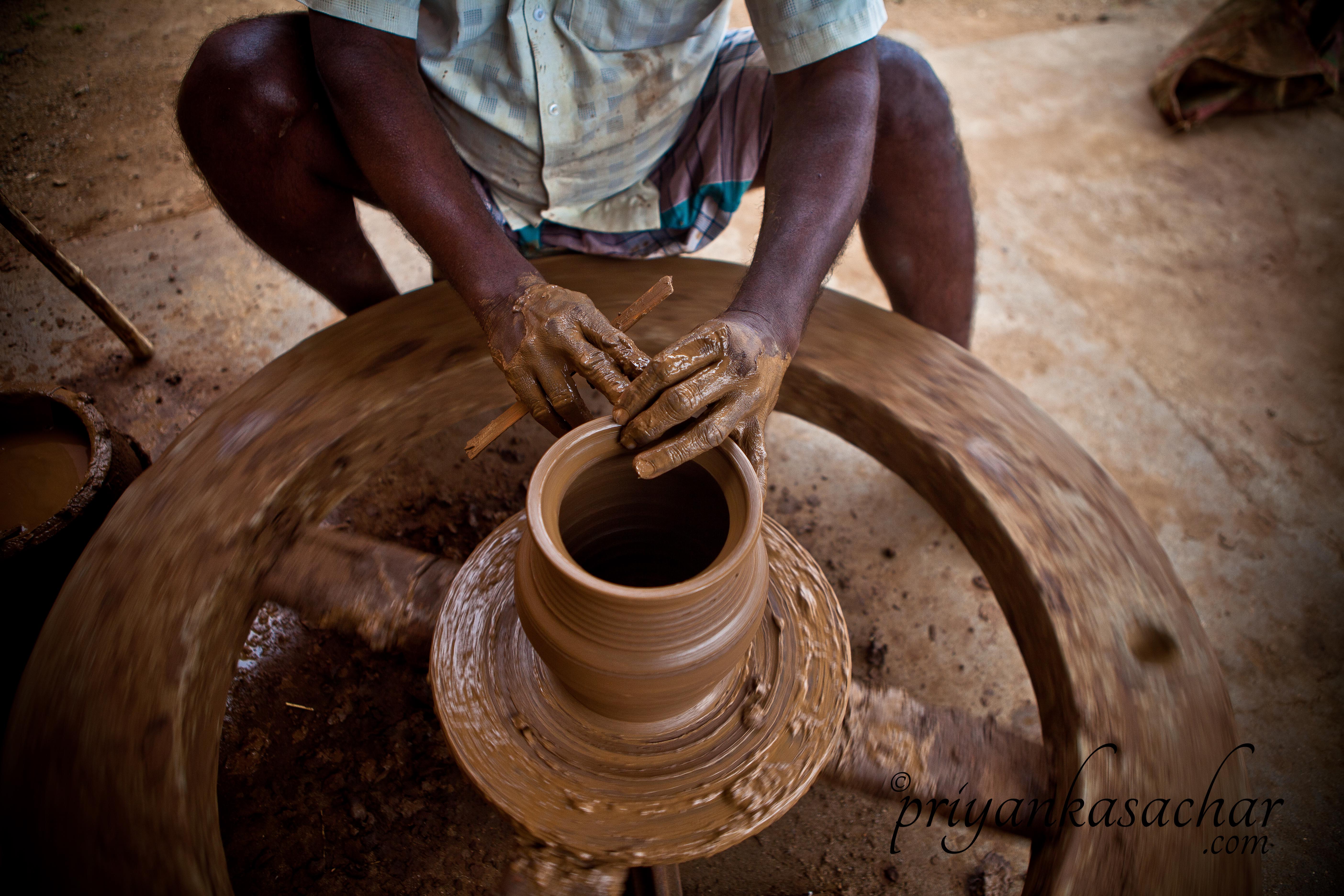

next stop – aanganvadi for pre-school kids at kesavapuram
Next up we visited a pre-school near by. It was bright, colourful and cheery. Caricatures of Mickey and Donald on the exterior walls and a few swings, greeted us in to the mini Disneyland. The kids seemed excited and probably amused by the new faces. They all recited a few poems for us. The primary focus being fun studies rather than stuff drilled into their brains. SST provides infrastructure for the schools and the reading material too. This is then handed over to the govt to run. The schools have a kitchen along with the classroom where meals are prepared on the spot and provided to the children. They arrive in the morning, play, learn, have their meal and then they all nap for a while just before their parents come to fetch them back. If only all schools followed this routine!
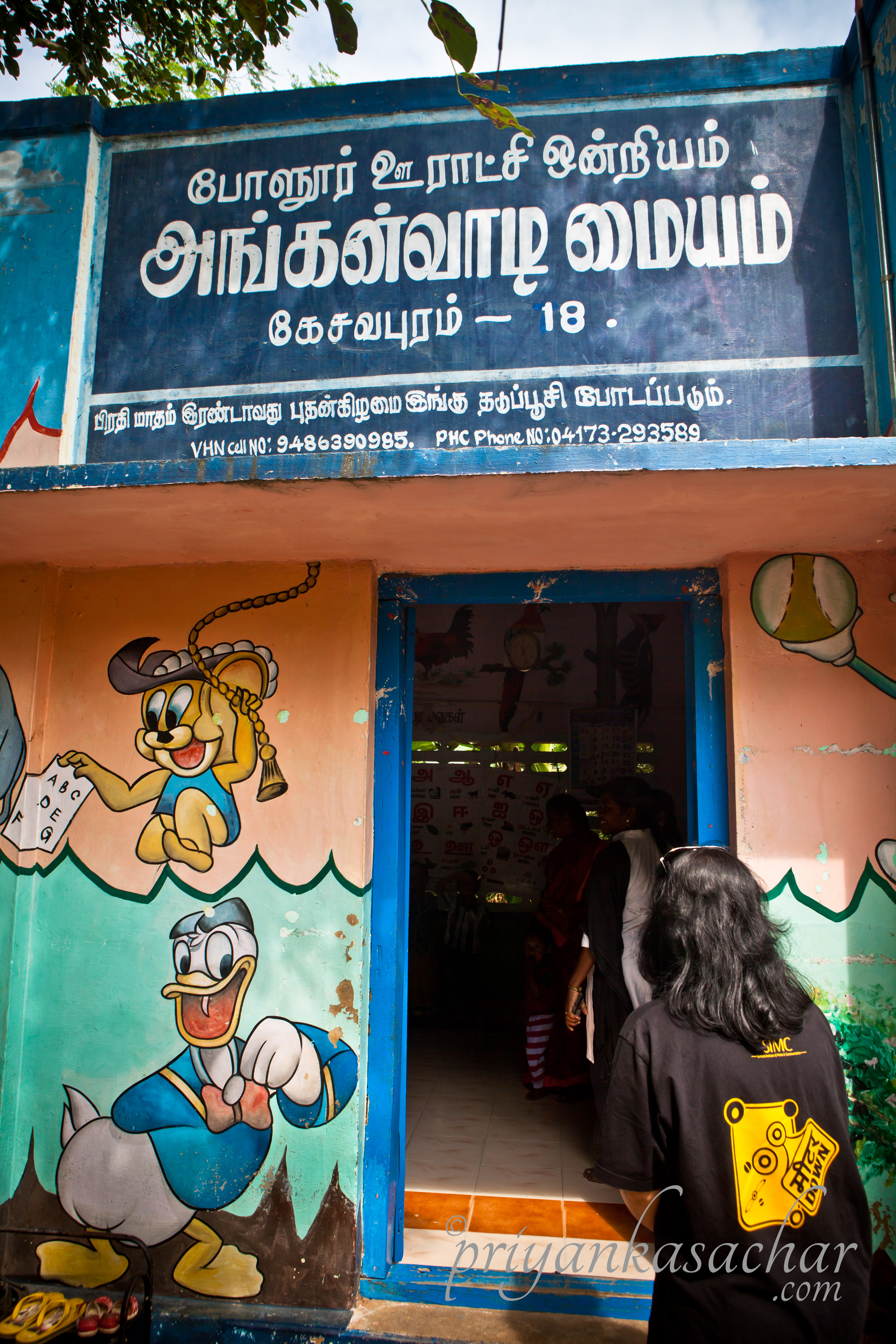

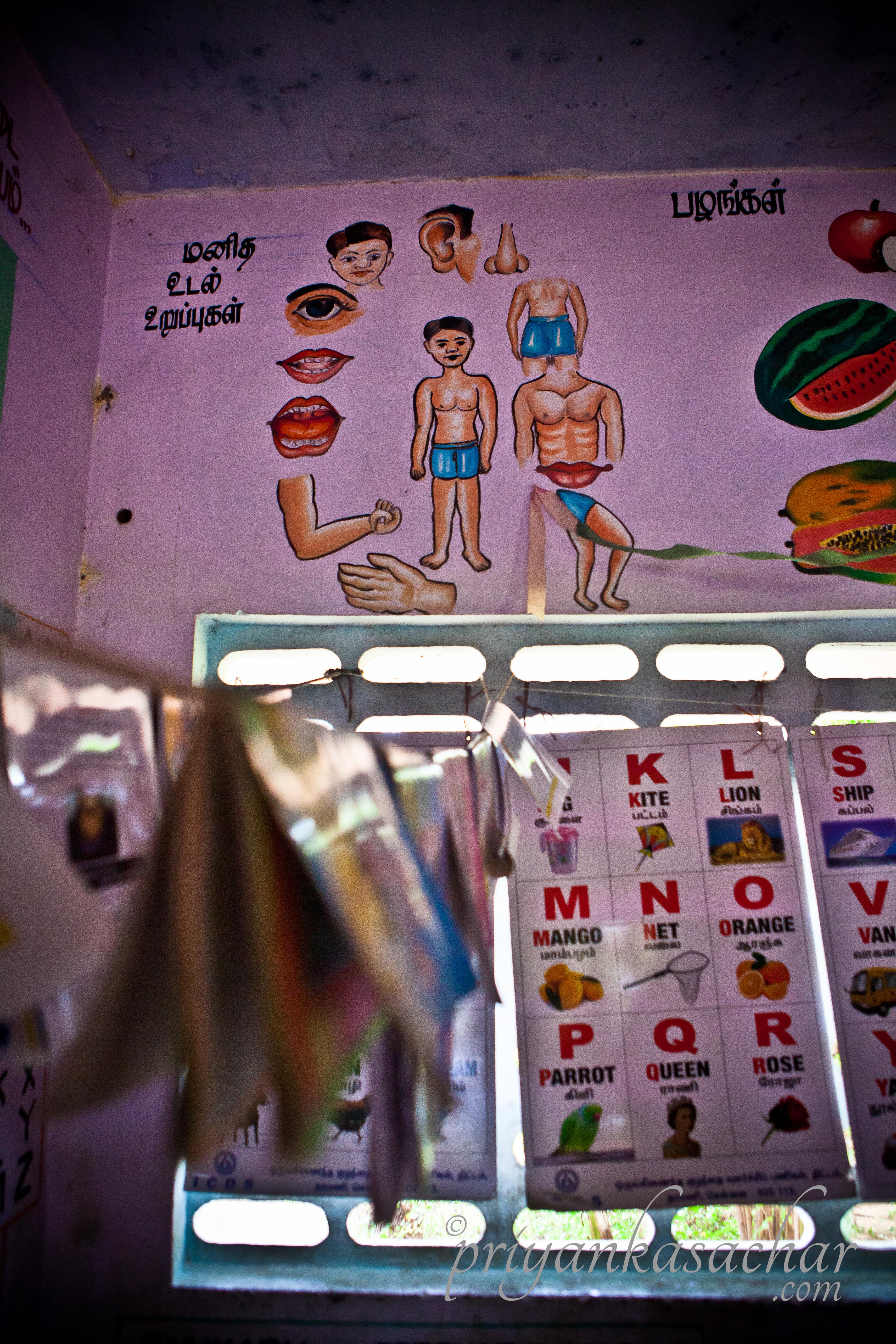
next stop – handicrafts with rope made with banana bark in chinna puttur!
Now comes the most exciting part of my trip – seeing the transformation of the humble banana leaf/bark into eco-friendly handicraft! We visited chinna puttur which was dotted with temples of headless goddesses! Legend has it that the Sage Jamadagni , due to some marital discord, ordered his son Parasurama to behead his own mother. The son followed the instructions, mother was decapitated as sacrifice and father, now pleased granted his son a boon. Needless to say, the son asked for his mother back and Sage Jamadagni reattached her head back. Now these idols signify the same. Annually the head is put on the goddess for a few days, prayed to and then packed back for next year! What was the point of doing it all one thinks, but How fascinating is all this! I digressed. But I couldn’t resist it.
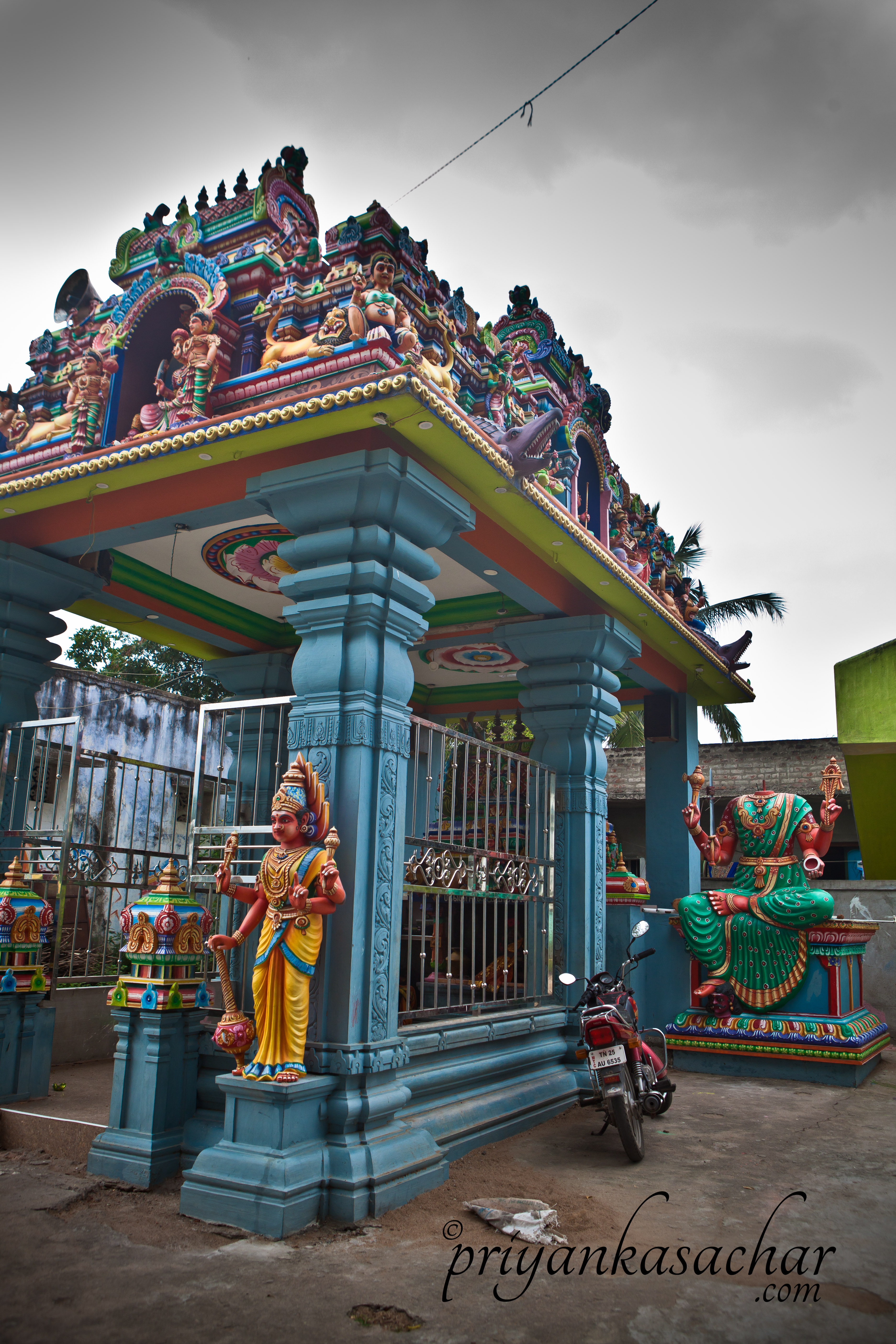
Back to handicraft – we spot several ladies sitting next to a temple (now that’s a very very common sight there) making handicraft with ropes. The rope for said handicraft can be single or double threaded. We were shown how the thread is woven from banana fibre. First the leaves/bark are dried and then when it is pulled apart, it comes out in long strands. These strands are then spooled on to a bicycle rim, upcycled (no pun intended) to form an innovative apparatus, that helps spin this fibre into rope! This rope is dried in the sun and it truly has a good tensile strength. This rope is then further used to make handicrafts like lamp shades, jewellery boxes, baskets, showpieces etc. The women who do this, do it part time. In alignment with the proverb mentioned above, SST’s role here is not limited to only teaching the women how to fish, they also teach them how to find more fish, how to descale it, sell it for profit, and maintain records. In other words SST not just teaches these women the skill , they also provide them bulk orders, help them sell these items, they teach them basic accountancy, book keeping and even maintaining of the minutes of various meetings! The village functions as a well oiled machine with records kept for everything. They take loans to start the project, soon repay them back and then start saving up the money they generate from the handicraft business. The women who learn all this, teach others around them and pay it forward. It’s a wonderful initiative in more ways than one.

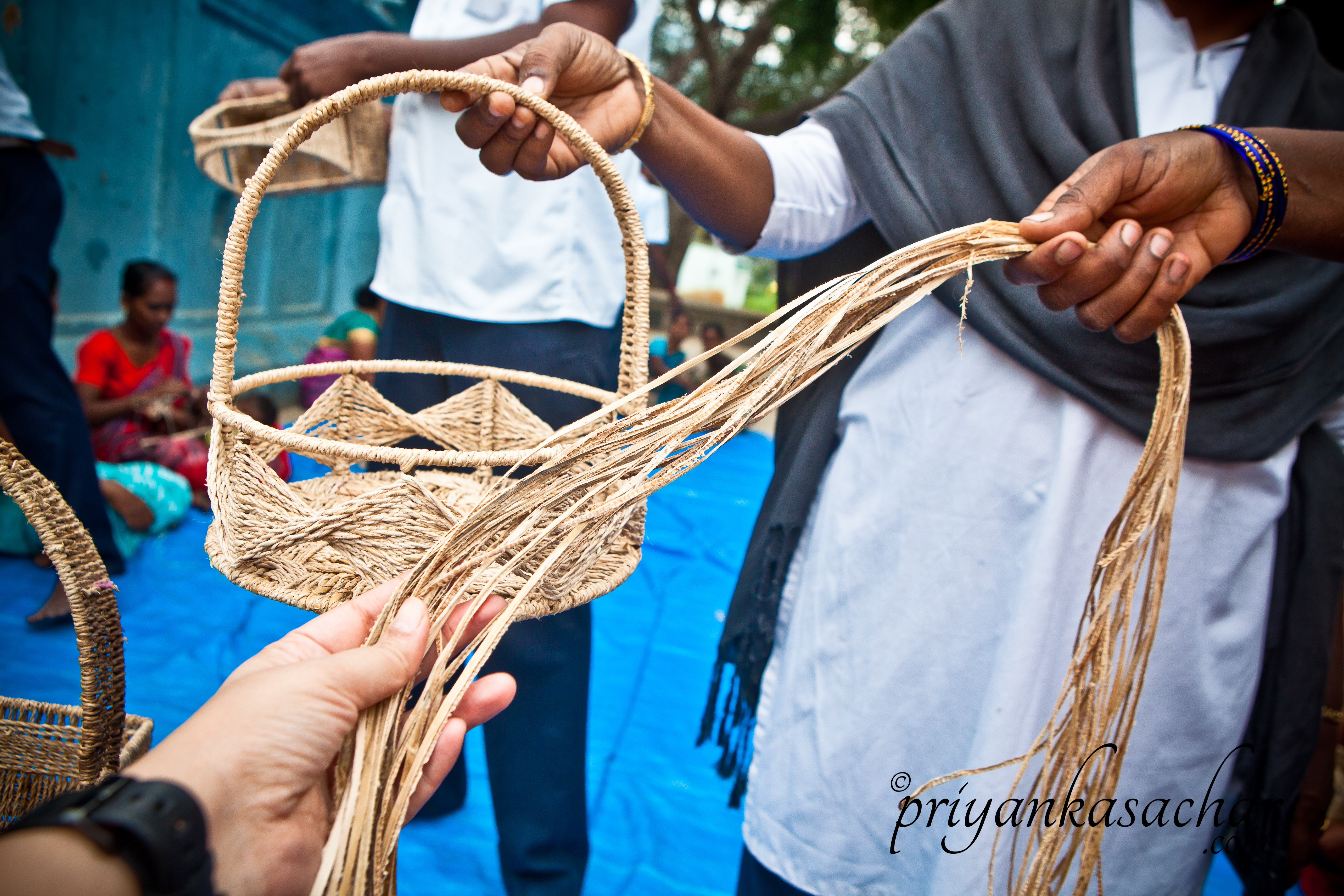

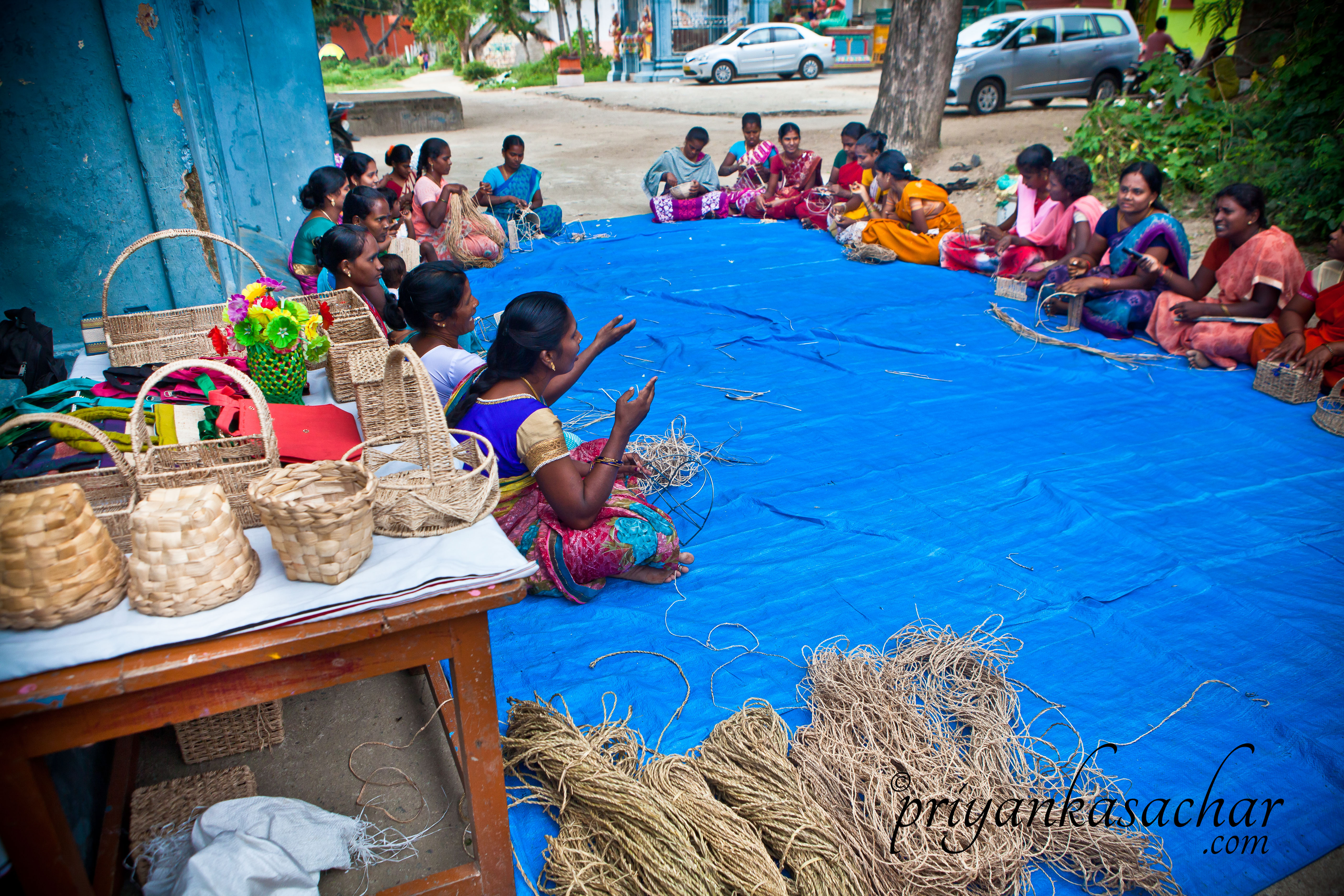
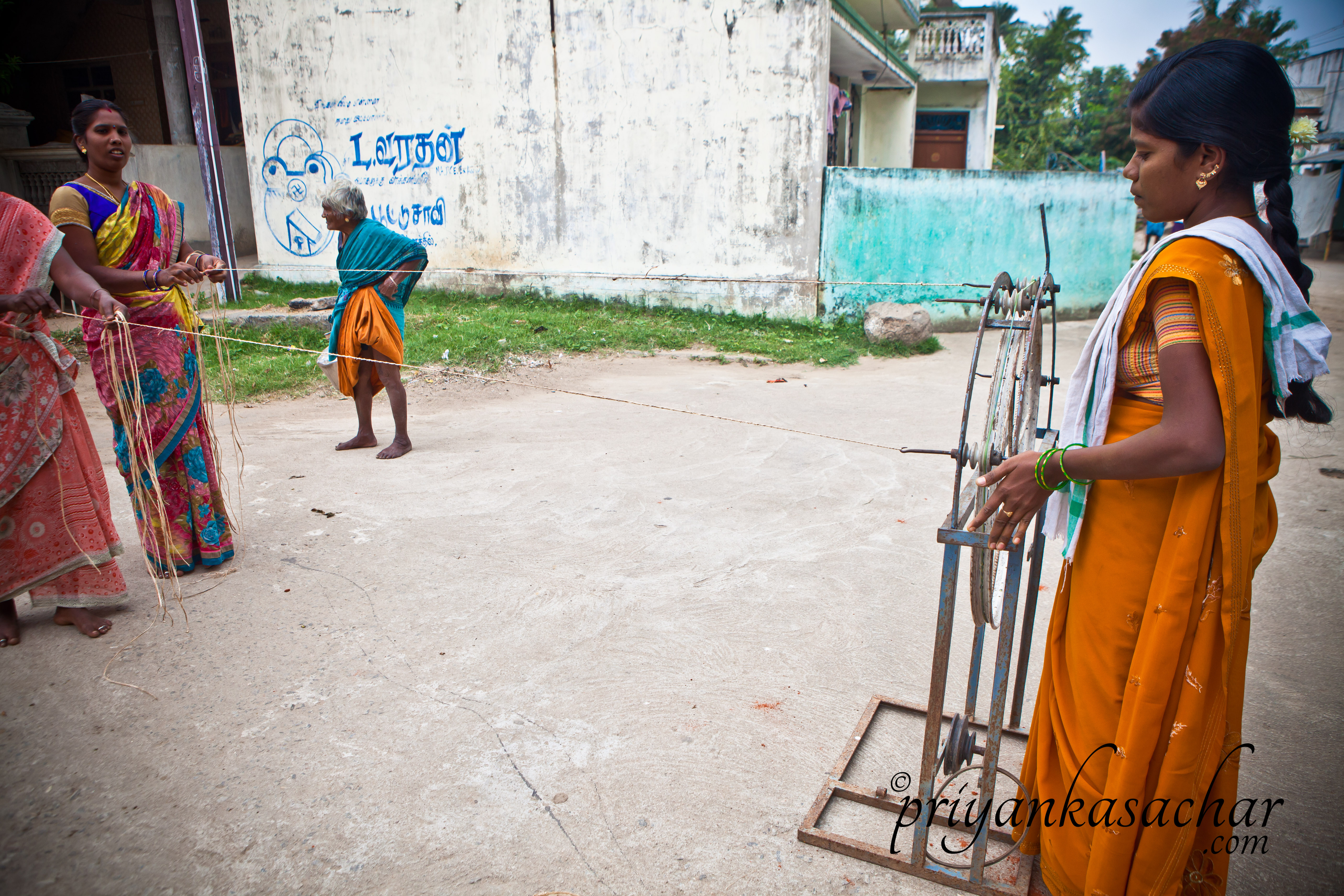
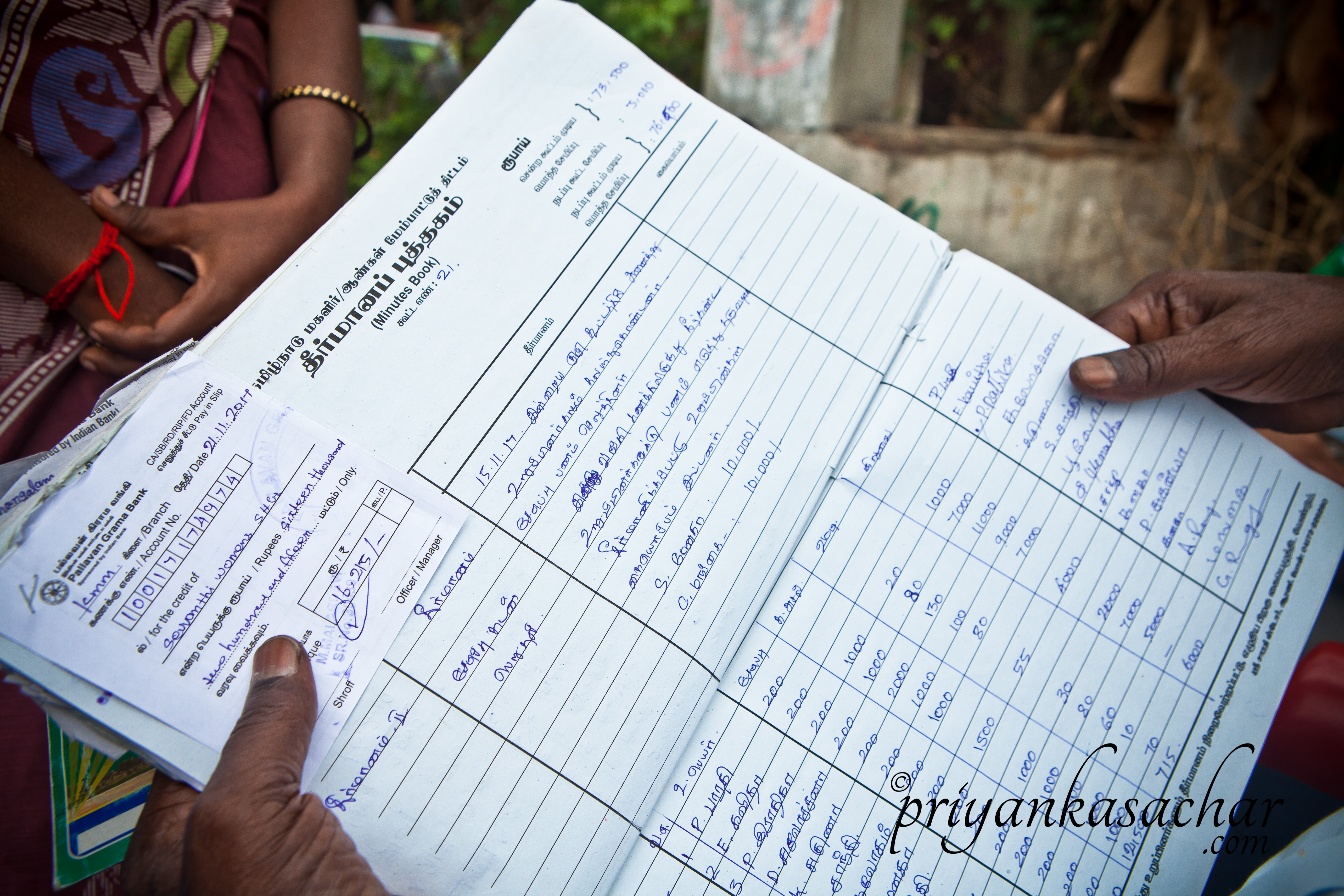
Next stop – traditional lunch
Much excited with the days activities, we now needed food for more than just our thoughts and we now headed to the SST office in Padavedu. We were given a traditional home made south indian meal comprising of many many items.
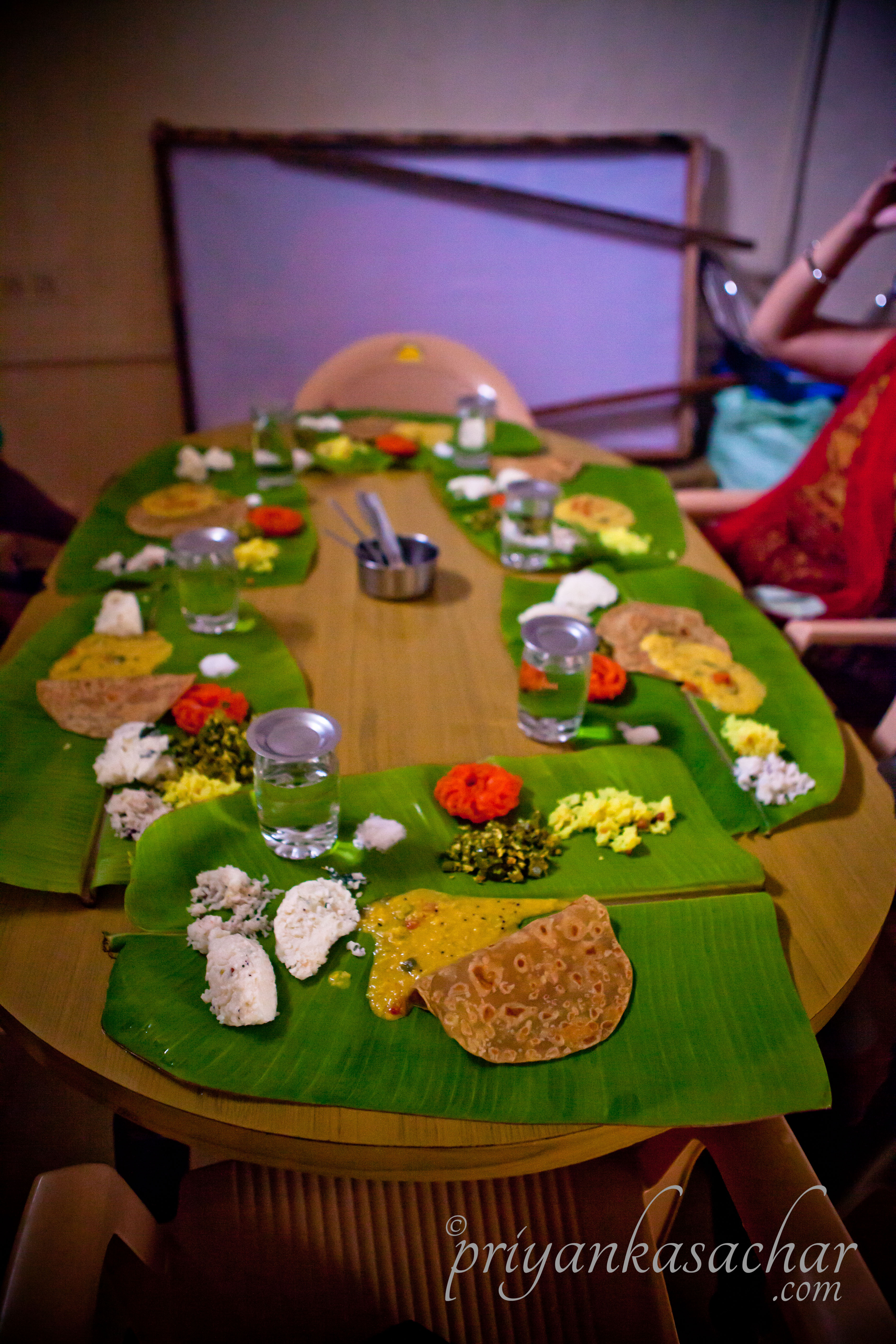
next stop – vermicompost that recycles garbage & produces organic fertiliser in chinna puttur
We proceeded to the vermicompost facility where women were segregating garbage into recyclable and non recyclable. We should all be ideally doing this at source, that is our own house.
Vermicompost is the product of the composting process using various species of worms. Vermicast is the end-product of the breakdown of organic matter by earthworms. It is basically shit that looks like chocolate sprinkles. Vermicast is known to contain reduced levels of contaminants and a higher saturation of nutrients and is an excellent, nutrient-rich organic fertilizer. The vermicast thus formed is sold to farmers in the vicinity.
We came face to face with the earth worms that eat this garbage and generate the shit sprinkles. It wasn’t pretty. But the end result is good for all of us and it would truly help us avoid manmade disasters like the Gazipur landfill etc which are permanently on fire and literally “breath-taking”.

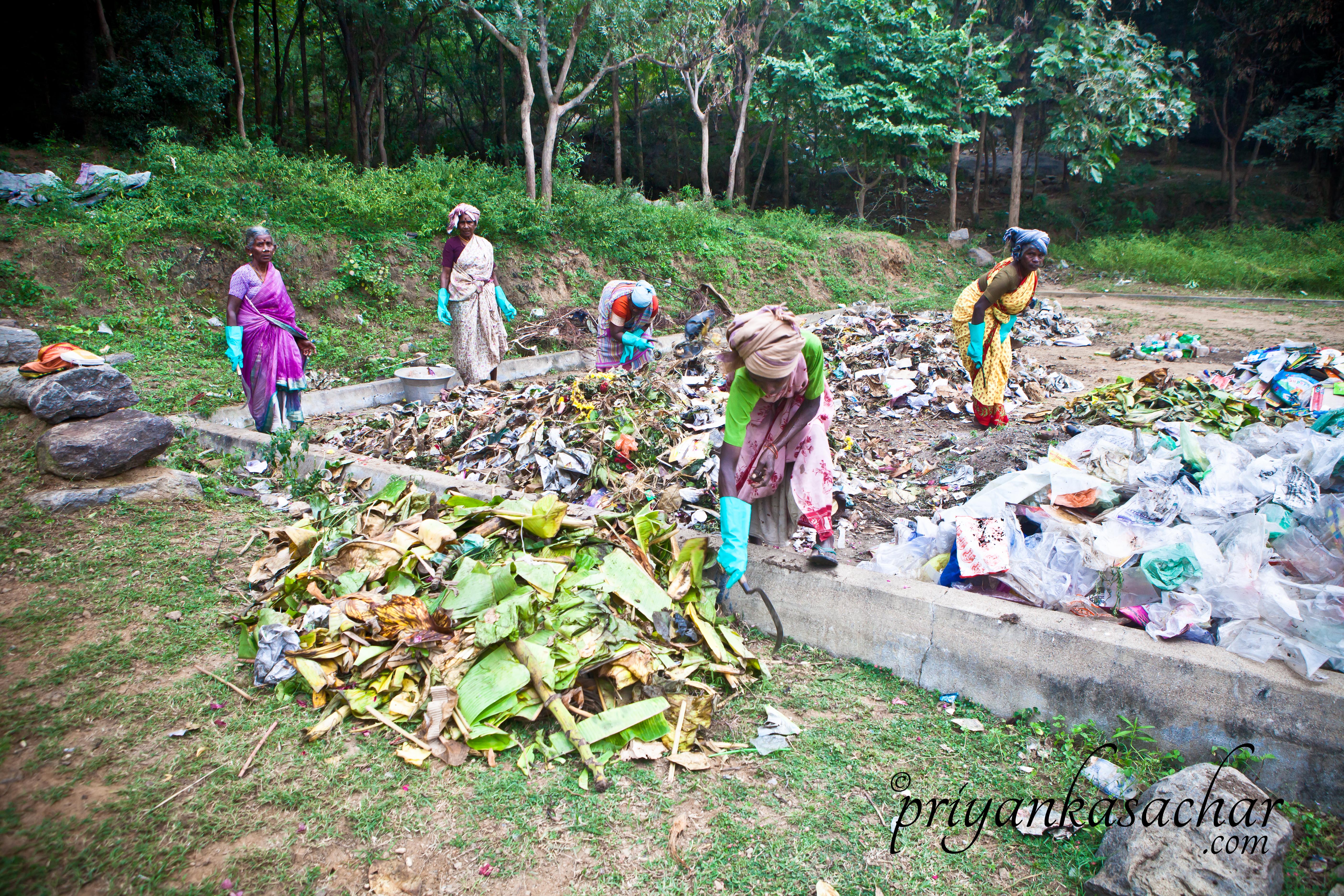

Final stop – temple care
And as we came to a close, we visited a few 12th century Ram temples , excavated by and looked after by SST. Every temple is similar to the ones around it and yet unique in some way. In fact Padavedu is a land of temples. At every 10 metres you will find one! Due to some natural disaster most of these temples were buried. TVS/SST have unearthed and takes care of many of these. The construction activites in Padavedu are hence supervised because there’s a very high chance that excavation will yield yet another ancient temple!
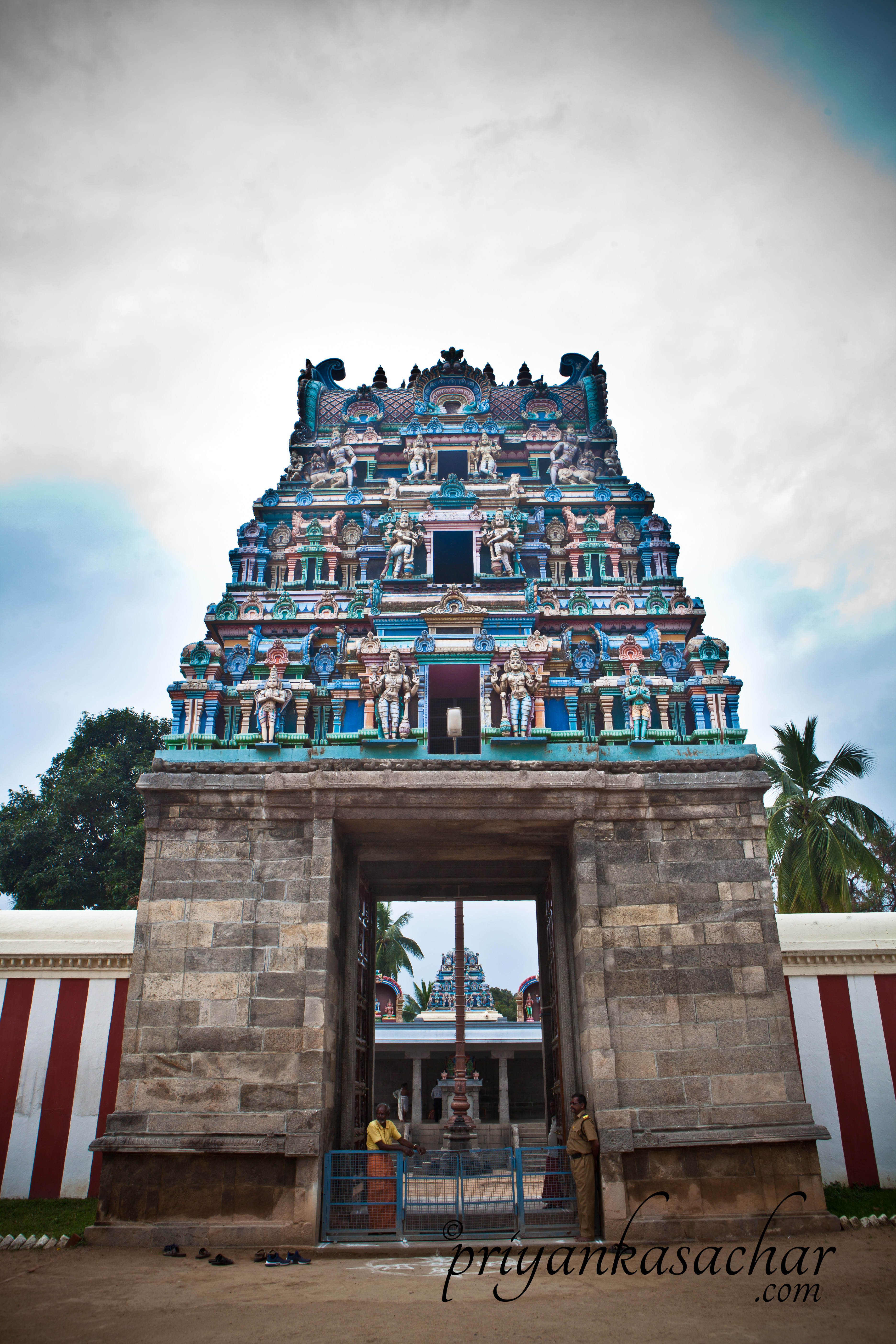
I was quite impressed with how SST transforms these villages and partners with local and central government agencies and other institutions/ companies to find solutions to the problems faced by the communities it works with. We were constantly told that SST works as change agents, not donors. Backed by this philosophy, SST has been working towards Sustainable Development Goals since last 20 years and their initiatives are in line with the ongoing government macro initiatives- ‘Make in India’, ‘Digital India’, ‘Start-up India ’ and ‘Swachh Bharat
Abhiyan’.
My take aways from this trip –
Hope after seeing at least SOME organisations that believe in paying it forward.
Fascinating eco-friendly activities.
The legends and myths and mysteries of Padavedu. I really want to explore this more.
The calm & serene forests & fields really make me feel like spending a longer period of time there. Oh and the 4G signal works well in these villages. If internet is sorted, everything seems doable.
Padavedu has so much to explore, yet hardly anyone has even heard of it. I surely want to visit it again.
Disclaimer: My trip was sponsored by SST but the views expressed here are personal.